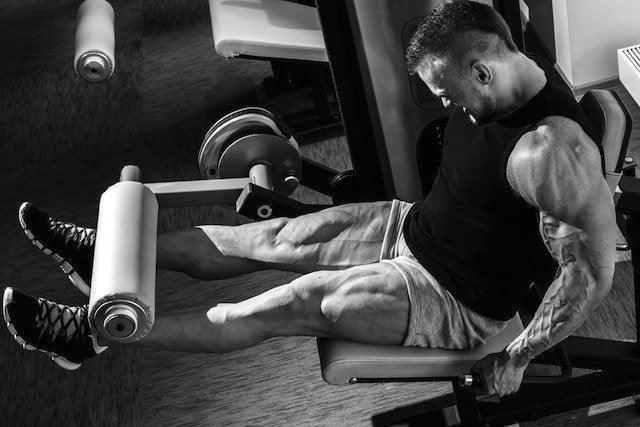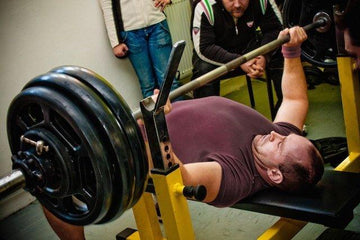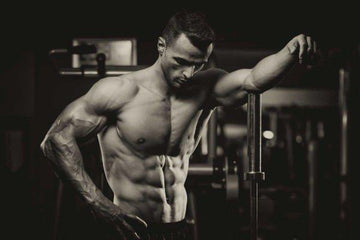

Shock Your Muscles into Growth
Table of Contents

There are a few studies that suggest a no rest period workout can increase muscle mass. Supersets, drop-sets, and giant sets are often used by bodybuilders to increase workout intensity are great for the weeks leading up into the show. According to one study, a no-rest period training routine produced greater increases in GH, testosterone, adrenaline, and lactate that led to larger increases in strength and muscle mass5.
Researchers compared the acute and long-term effects of a “no-rest regimen” and those of a regimen with “rest period”. The subjects that performed the high intensity, no rest period exercise protocol had a 13% increase in muscle mass compared to the prolonged rest period group. Interestingly, both groups performed the same exercise volume the only difference was the greater training intensity that occurred with no rest training. It’s no surprise that many people who spend more time talking than actually working out look the same year round. Another study examined metabolic adaptations in muscle to intermittent (prolonged rest periods) and continuous muscle (short rest periods) contractions. Subjects trained both their right and left legs with a protocol that used the same weight; the only difference was the rest period duration. The right leg was trained with contractions in conjunction with intermittent rest periods to reduce metabolic stress. The left leg (continuous contractions) was trained with no rest periods. Both protocols involved isometric contractions at 70% of a maximum voluntary isometric contraction. The increase in isometric strength was greater for the continuous leg training than for intermittent training. In addition, the leg that was trained with the short rest periods gained more muscle mass than the leg that trained with prolonged rest periods6. These findings suggest that factors related to the greater metabolite changes during high intensity; high lactate, high GH, IGF-1, and testosterone producing exercise training results in greater increases in muscle mass7. It may be that the combined acute metabolic stress and hormonal responses to short rest exercises leads to greater acute increases in GH and testosterone which provide a more anabolic environment for muscle growth.

Researchers recently reported in the Journal of Strength and Conditioning Research that taking no rest periods in between sets may enhance muscle growth. Researchers compared the effects of 8 weeks of high-resistance circuit (HRC) training (3–6 sets of 6 exercises, 6 repetition maximum
A couple of things should be considered: 1.) Subjects were asked to compete each set to complete muscular failure, which many studies do not do. 2.) The subjects were told to lift the weight as explosively as possible while using good form. Another big surprise was study participants were asked to maintain their normal diets but no restrictions were placed on them. In other words, they were not dieting and they lost more fat than the traditional strength-training group with prolonged rest periods. This is good news for bodybuilders who needs to take some time to heal their joints, that circuit training with low workloads and short rest periods can not only maintain strength but also muscle mass comparable to using heavy weights.
In conclusion, circuit weight training with short rest periods and lightweights may be the perfect workout for the recovering bodybuilder after a competition. The study mentioned above found that circuit weight training was as effective as the traditional weight-training group in terms of strength and muscle mass. In addition, to helping the joints recuperate; circuit weight training is a good way to give your body a much-needed rest.
1. Camargo,MD, Stein, R, Ribeiro, JP, Schvartzman, PR, Rizzatti, MO, and Schaan, BD. Circuit weight training and cardiac morphology: A trial with magnetic resonance imaging. Br J Sports Med 42: 141–145, 2008.
2. Harber,MP, Fry, AC, Rubin,MR, Smith, JC, andWeiss, LW. Skeletal muscle and hormonal adaptations to circuit weight training in
untrained men. Scand J Med Sci Sports 14: 176–185, 2004.
3. Kelemen, M. H., K. J. Stewart, R. E. Gillilan, C. K. Ewart, S. A. Valenti, J. D. Manley, and M. D. Kelemen. Circuit weight training in cardiac patients. J Am Coll Cardiol 7: 38–42, 1986.
4. Goto K, Ishii N, Kizuka T, Takamatsu K. The impact of metabolic stress on hormonal responses and muscular adaptations. Med Sci Sports Exerc. 2005 Jun;37(6):955-63.
5. Goto K, Ishii N, Kizuka T, Takamatsu K. The impact of metabolic stress on hormonal responses and muscular adaptations. Med Sci Sports Exerc. 2005 Jun;37(6):955-63.
6. Schott J, McCully K, Rutherford OM. The role of metabolites in strength training. II. Short versus long isometric contractions. Eur J Appl Physiol Occup Physiol. 1995;71(4):337-41.
7. Nishimura A, Sugita M, Kato K, Fukuda A, Sudo A, Uchida A. Hypoxia increases muscle hypertrophy induced by resistance training. Int J Sports Physiol Perform. 2010 Dec;5(4):497-508.
8. Alcaraz PE, Perez-Gomez J, Chavarrias M, Blazevich AJ. Similarity in Adaptations to High-Resistance Circuit vs. Traditional Strength Training in Resistance-Trained Men. J Strength Cond Res. 2011 Jun 8.
MUSCLE MEDIA MAGAZINE FOR MEN
The premier source of training, nutrition, supplements, fat loss and health for men.

















